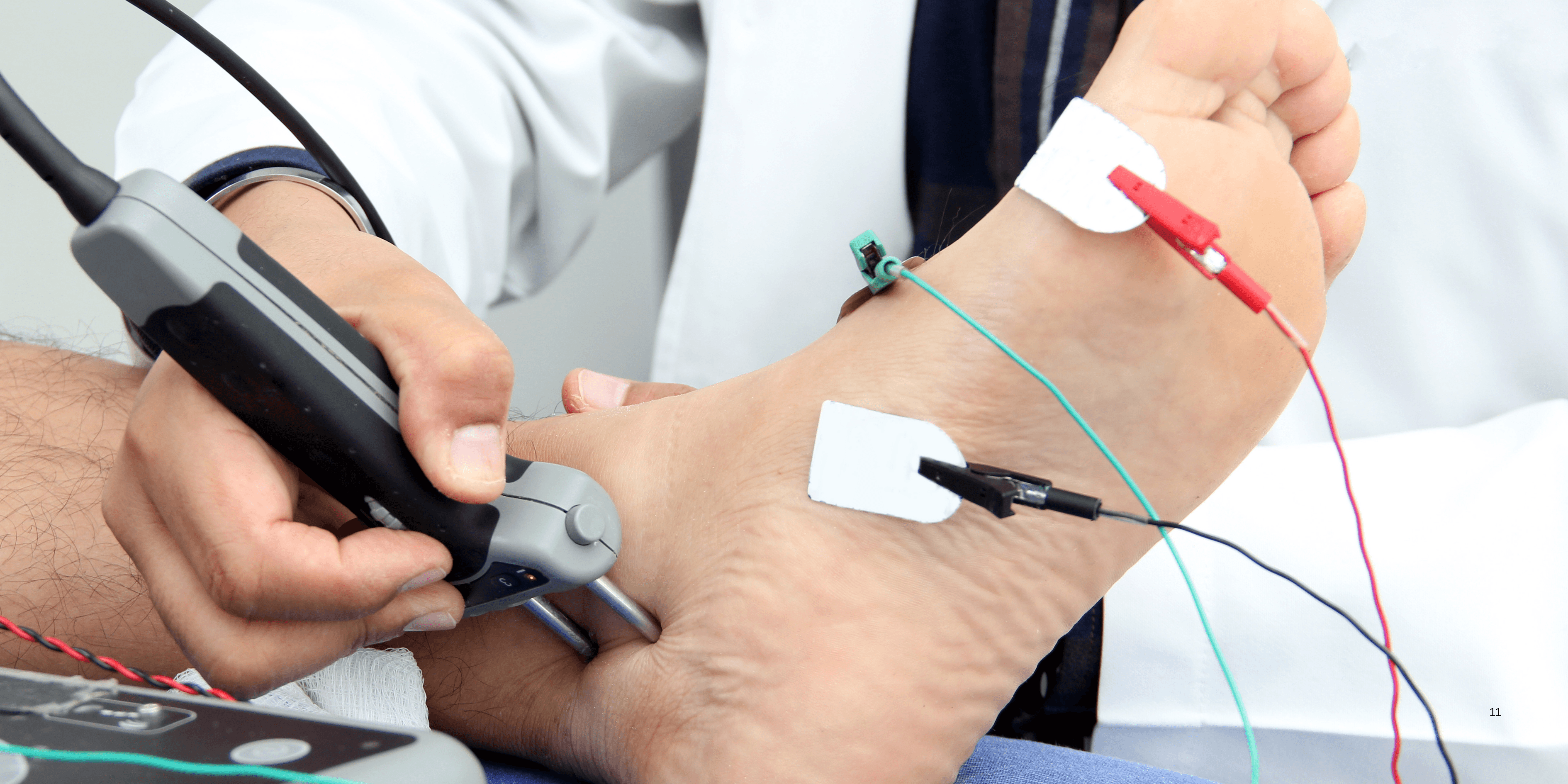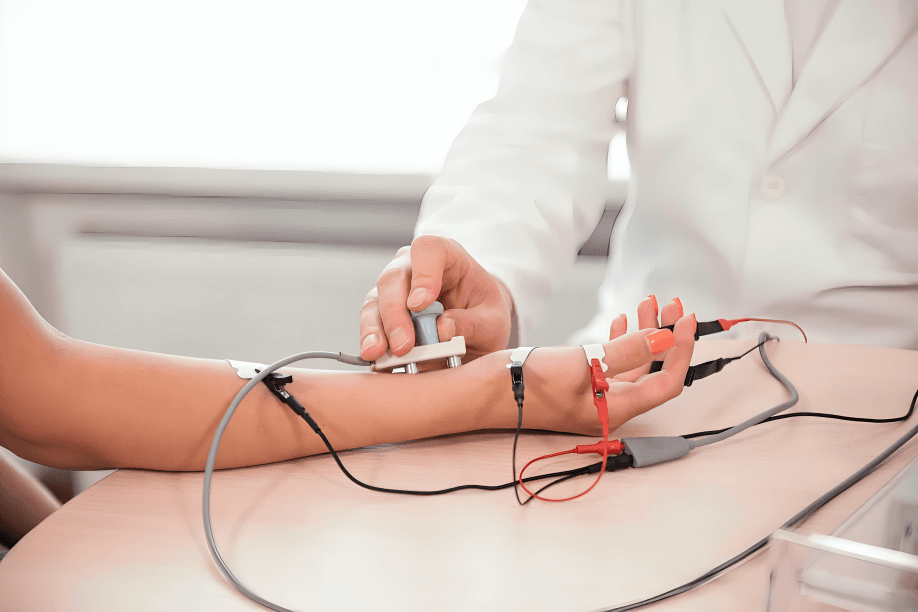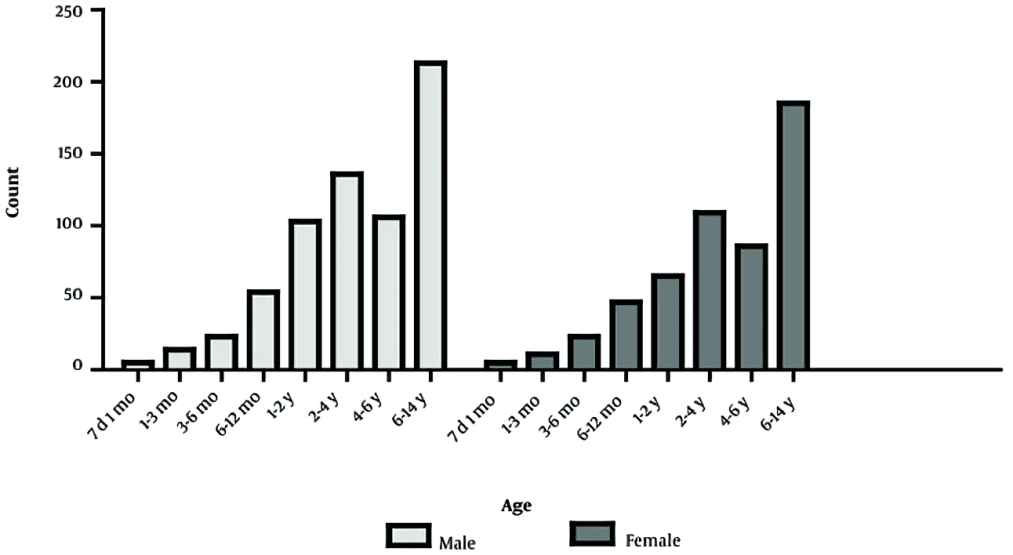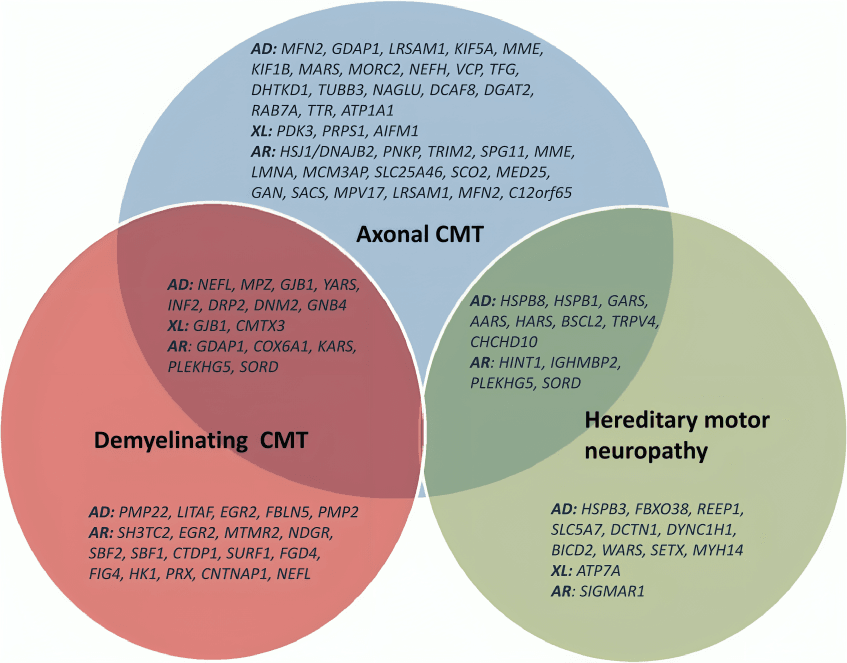
“
Nerve conduction studies in diagnosis are vital tools in modern neurology. They help detect, localize, and assess nerve damage or dysfunction by measuring the speed and strength of electrical signals in nerves. These tests are commonly used to confirm conditions like carpal tunnel syndrome, peripheral neuropathy, or radiculopathies.1
1
”
Dr. Herbert Jasper, a pioneer in electrophysiology, advanced nerve conduction testing, showing its value in assessing nerve health and detecting hidden neuropathies often missed during routine clinical exams.1
These studies are usually paired with electromyography (EMG), allowing doctors to distinguish between muscle diseases and nerve disorders, offering a fuller picture of neuromuscular health. 2

The test involves placing small surface electrodes on the skin, which deliver mild electrical impulses, helping physicians determine if the nerve conduction speed falls within the expected range or shows signs of impairment.
The normal conduction speed for most peripheral motor nerves is around 50–60 meters per second; any significant drop can suggest nerve compression, trauma, or chronic neuropathic conditions. 3
Nerve conduction studies help diagnose peripheral neuropathies from diabetes, alcohol use, chemotherapy, or vitamin deficiencies, guiding treatment by identifying specific patterns of nerve damage.4
Repetitive stimulation studies within nerve conduction testing can diagnose disorders like myasthenia gravis, where repeated impulses show a decremental response due to impaired neuromuscular transmission. 5
Nerve Conduction Studies in Diagnosis are objective, quantifiable, and reproducible, which makes them ideal for both clinical diagnosis and monitoring nerve recovery after injury or treatment over time. 6
During testing, a decreased amplitude in nerve response typically suggests axonal loss, while slowed conduction velocity and prolonged latency are more indicative of demyelinating conditions. 7
The temperature of the limb being tested can affect results, as cooler temperatures slow nerve conduction, so clinicians often warm the limb or adjust values accordingly to maintain test accuracy. 8

In children, normal nerve conduction values differ from adults, as nerves develop myelin gradually; therefore, age-specific reference values are used in pediatric Nerve Conduction Studies in Diagnosis.
Nerve Conduction Studies in Diagnosis have been incorporated into clinical guidelines for multiple conditions, helping standardize the workup for patients with suspected peripheral nerve dysfunction.9
For surgical planning, such as in cases of severe carpal tunnel syndrome or ulnar nerve entrapment, nerve conduction findings are essential to assess the severity and localize the site of compression. 10
In suspected radiculopathy, although nerve conduction studies may appear normal, they help rule out peripheral causes, and when combined with EMG, they strengthen diagnostic accuracy significantly. 11
These tests can help in cases of nerve trauma by localizing the injury, determining whether the nerve is still conducting, and estimating the likelihood and timeline of potential nerve regeneration. 12
Studies involving polyneuropathies often use symmetrical testing of both upper and lower limbs, helping detect length-dependent patterns of damage that are common in metabolic neuropathies. 13
Nerve conduction study abnormalities must be interpreted with symptoms and clinical findings, as some people without symptoms may show borderline changes that don’t necessarily indicate a disease.14

In hereditary neuropathies like Charcot-Marie-Tooth disease, nerve conduction studies help distinguish demyelinating from axonal types, aiding genetic counseling and guiding targeted genetic testing.
Modern portable nerve conduction devices enable bedside or outpatient testing, making them ideal for critically ill or immobile patients who can't easily access hospital-based diagnostic services.15
These tests are widely used in research settings to explore the effects of diseases or medications on peripheral nerve function, and they play a key role in clinical trials for neuromuscular disorders.16
Philosopher-physician Avicenna described nerve issues from “obstruction or dryness,” echoing modern ideas of impaired conduction and showing how ancient insights still guide today’s neurology. 17


